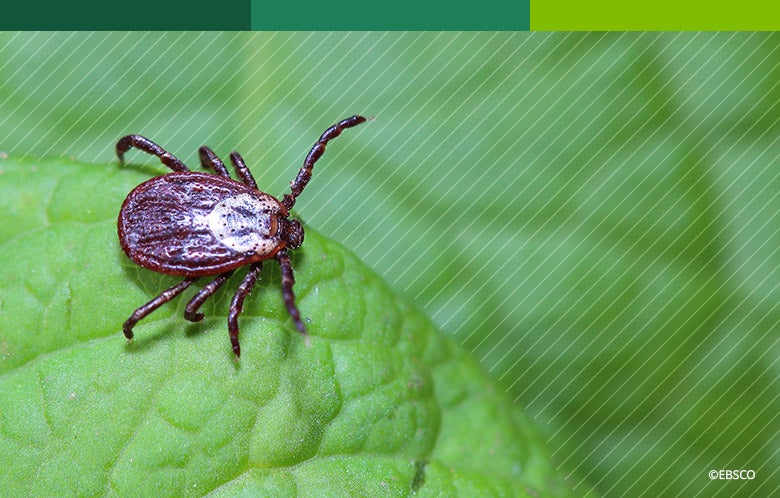For people in the northern hemisphere, summer is in full swing, and the possibility of tick bites is near its peak. Those who take advantage of the warmer weather to hike, camp, or take part in other outdoor activities could find themselves at increased risk for tick bites.
Tick bites can occur during any time of year, but the peak incidence in the United States is from April to October. Higher temperatures and increased precipitation and humidity accompanying climate change has expanded the geographical range where ticks can live. Even in places like Canada where ticks were once unable to survive, tick bite cases are becoming more common.
With milder winters and longer summers, the survivability and lifespan of ticks is likely to increase, leading to more tick bites and a higher risk for infections. In the United States and Canada, tick bites are the most common vector for infections. Ticks are capable of carrying diseases like Lyme disease, babesiosis, and Rocky Mountain spotted fever. According to the Centers for Disease Control and Prevention, the incidence of Lyme disease in the United States has almost doubled since 1991.
Apart from the more commonly transmitted diseases, ticks can carry rare and potentially deadly viral infections. The Powassan virus – seen in the United States, Canada, and Russia – usually presents as encephalitis. The incubation period is between seven and 34 days, and the virus cannot be transmitted between humans. For those who contract Powassan virus disease, supportive care is the only currently available treatment. There have been two deaths attributed to the Powassan virus in the northeastern United States so far this year, and incidence may be on the rise. In 2019, 39 cases of Powassan virus disease were reported, up from just 12 cases in 2011.
As tick bites and vector-borne diseases become more common due to warmer temperatures, public awareness and prevention methods will be vital to ward off infections. As you enjoy the outdoors, remember these tips to avoid tick bites:
- Avoid areas where ticks reside (tall grassy areas, bushes, and on wild animals).
- When hiking or biking, stay in the middle of designated trails.
- Use insect repellents approved by agencies such as the Environmental Protection Agency; wear clothing/gear treated with 0.5 percent permethrin.
- Check clothing/gear for ticks after returning indoors. Wash clothes in hot water and dry them using high heat. Be sure to place any dry clothing in a dryer set to high heat for at least ten minutes to kill any lingering ticks.
- Check your pets for ticks. If you find any, follow the steps below to safely remove them.
- Shower within two hours of being outdoors to potentially remove any ticks. Perform a tick check to inspect areas where tick bites most often occur, such as the arm pits, ears, navel, backs of the knees, groin, scalp, and waistline.
Avoiding tick bites is preferable, but if you happen to find a tick, do the following:
- Grab the tick with a pair of clean, fine-tipped tweezers; get as close to the skin as possible. Then pull straight up. Avoid twisting the tweezers as this can cause parts of the tick to break off and remain in the skin.
- If the tick is only partially removed, look for the mouthpart. If the mouthpart breaks off and stays in the skin, try to remove it with clean tweezers. If the mouthpart cannot be removed easily, leave it alone. Eventually, it will fall out on its own.
- Once the tick is removed, thoroughly clean the bite wound and wash your hands. Save the removed tick for identification by placing it in a sealed plastic bag or container, wrapping it tightly in clear tape, or taping it to a piece of paper. Though it may be tempting, do not crush the tick with your fingers.
Both the Centers for Disease Control and Prevention and the Infectious Disease Society of America (IDSA) recommend avoiding the use of heat or substances such as nail polish, petroleum products, or other chemicals to remove ticks from the body.



